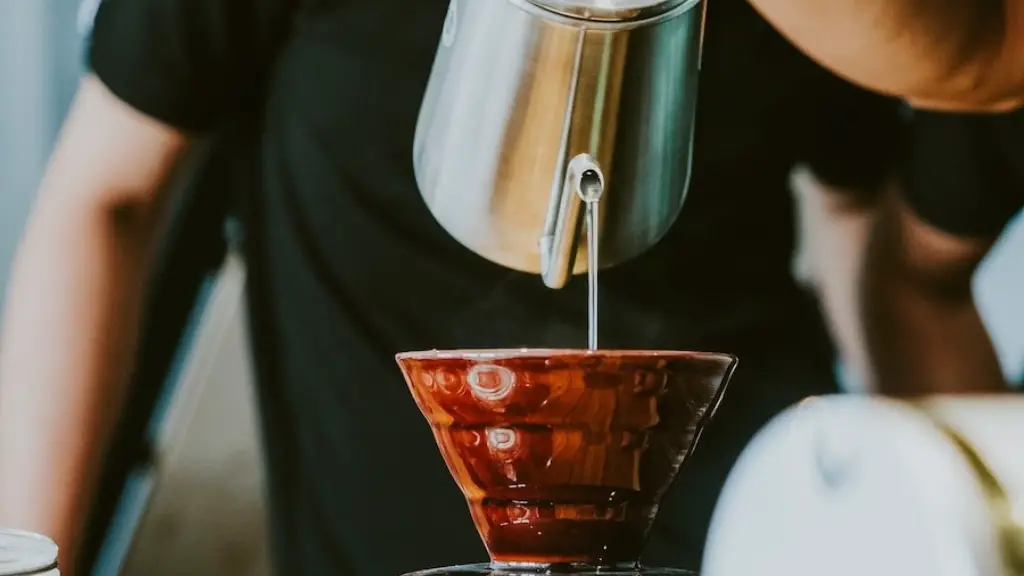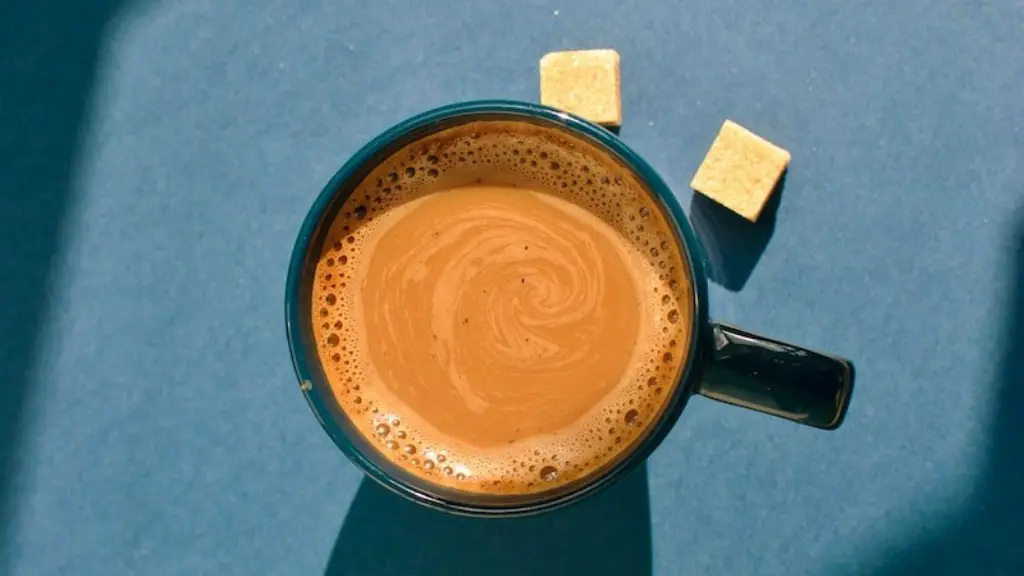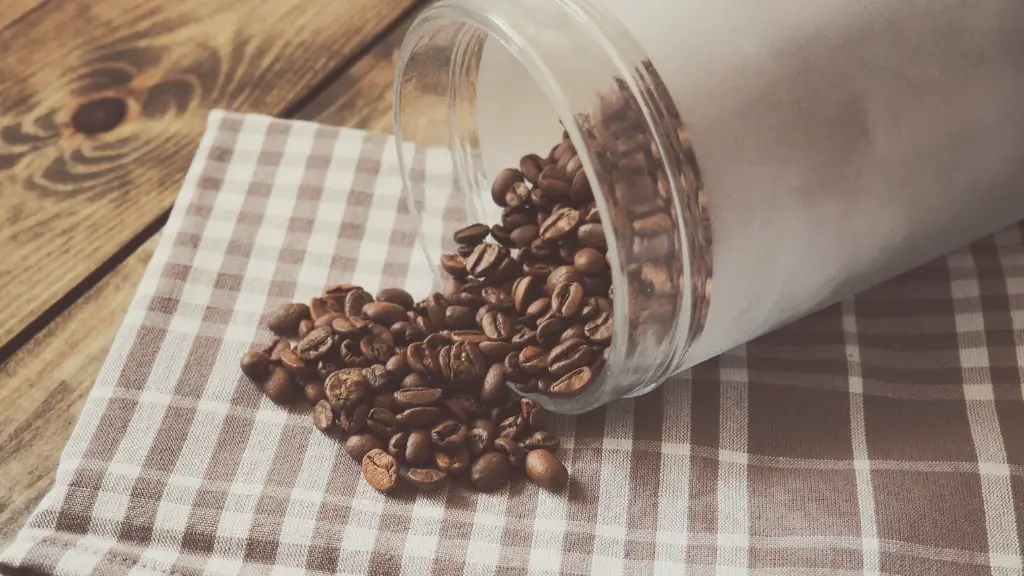Coffee is enjoyed by millions of people all over the world every day. However, many people are aware that drinking coffee can cause stained teeth. To counter this, it is widely advised that people brush their teeth after drinking coffee.
Many dental experts have noted that, if done correctly, brushing your teeth after drinking coffee can help to remove some of the staining that coffee causes. In particular, brushing can help to reduce the effect of the chromogens, which are the molecules that contain the pigments that give off staining.
To obtain the best possible results from brushing, dentists recommend that it should be done soon after drinking the coffee, as the stain particles are still on the surface of the teeth. Further, brushing should be done in multiple directions across the teeth, as this will help to scrub off the particles more effectively.
Experts also suggest that, rather than brushing alone, it is best to floss after drinking coffee, too. This helps to clear away the particles that cling to areas that may not be reached with a brush. Furthermore, they recommend abstaining from brushing the teeth too often, as this can lead to tooth erosion and more staining in the long run.
At the same time, some dental experts also recommend that people drink coffee through a straw. This limits the contact of the coffee with the teeth, thus reducing staining. Finally, using a whitening toothpaste or mouthwash can also reduce the effect of staining from the coffee.
In summary, brushing your teeth after drinking coffee can help to prevent staining. The effects of the chromogens can be further lessened by flossing after drinking, avoiding over-brushing and using a whitening toothpaste or mouthwash. It is also advised that one should limit the contact of coffee with teeth by using a straw when drinking coffee.
Whitening Products
One of the ways people can prevent staining caused by coffee is by using whitening products. For example, many toothpastes and over-the-counter products claim to whiten teeth by removing staining, but their effectiveness can vary greatly.
One popular method of whitening is the use of whitening strips. These are plastic strips coated with whitening ingredients, which are placed on the teeth for a fixed period of time. These ingredients help to remove staining from the teeth, leaving them looking brighter and whiter. While these strips are effective, they are an expensive way of whitening teeth and the results are often short-term.
Alongside whitening strips, people can go to their dentist to get professional whitening treatments. These treatments use strong bleaching agents that can penetrate the enamel and dentin of the teeth, resulting in more permanent whitening effects. However, these treatments can be expensive, and some can cause adverse effects, such as tooth sensitivity. For this reason, it is best to consult with a dentist to decide the best course of action.
In conclusion, while brushing teeth after drinking coffee can help with staining, there are various whitening treatments available to help people obtain whiter teeth. Some of these treatments involve professional procedures, which should only be done with the advice of a dentist. Others include the use of whitening strips or toothpastes which are more cost-effective, but have shorter-term results.
Toothpastes To Avoid
When looking for a toothpaste to prevent staining from coffee, there are certain active ingredients that people should be aware of. Abrasive ingredients, for example, can damage the enamel of the teeth, which can then lead to more staining. Some of the most common abrasive ingredients include baking soda, pumice, chalk, and even baking powder.
It is also important to avoid toothpastes that contain chlorine dioxide, as this can erode the enamel of the teeth. This can then lead to further staining and even discoloration of the teeth. Chlorine dioxide is often used in whitening products because it is an effective whitener, but it has been linked to the erosion of the enamel.
On the other hand, look for toothpastes that contain stabilized chlorine dioxide. This particular type of chlorine dioxide is designed to not cause erosion, and it has been found to be effective in tooth whitening. Additionally, using toothpastes that contain fluoride or enzymes, such as lactoperoxidase and glucose oxidase, can also help to reduce staining from coffee.
In summary, when looking for toothpaste to prevent staining from coffee, it is important to look for those that do not contain abrasive ingredients or chlorine dioxide. Instead, look for pastes that contain fluoride, stabilized chlorine dioxide, or enzymes, such as lactoperoxidase or glucose oxidase.
Alternative Options
Apart from brushing, flossing, and using whitening products, there are some other options to consider when trying to prevent stained teeth from coffee. Regular drinking of water, for example, helps to flush out the staining particles that are left in the mouth after consumption of coffee. Similarly, rinsing the mouth with a vegetable-based oil, such as coconut oil, can also help remove the staining.
In addition to rinsing, people can also try chewing sugar-free gum after drinking coffee. This helps to stimulate the production of saliva, which helps to wash away the particles that cause staining. Finally, consuming foods high in antioxidants, such as certain fruits and vegetables, can also help to keep teeth looking whiter.
In conclusion, apart from brushing and flossing, people can try some alternative methods to reduce coffee staining. These alternatives include regularly drinking water, rinsing the mouth with a vegetable-based oil, chewing sugar-free gum and eating antioxidant-rich foods.
Preventative Measures
Finally, in order to prevent staining from coffee in the first place, there are some preventative measures that can be taken. First, avoid drinking coffee too frequently. This can reduce the overall amount of staining caused by the coffee. Additionally, it is important to maintain good oral hygiene, as this can help to reduce the staining effects of coffee.
Next, use an alcohol-free mouthwash after drinking coffee. Although the alcohol in the rinse can help to kill bacteria, it can also dry out the mouth, leaving it more prone to staining. Finally, using a straw to drink coffee can also limit staining, as the liquid only makes contact with a small portion of the teeth.
In summary, some preventative measures that can be taken to reduce coffee staining include limiting coffee intake, maintaining good oral hygiene, using an alcohol-free mouthwash and drinking coffee through a straw. While these steps can help to reduce staining, it is also important to brush and floss regularly.





